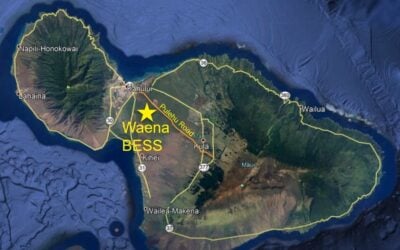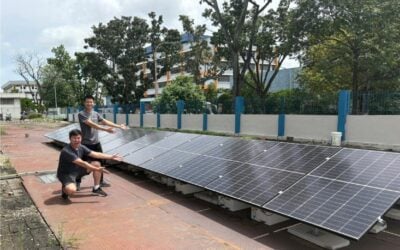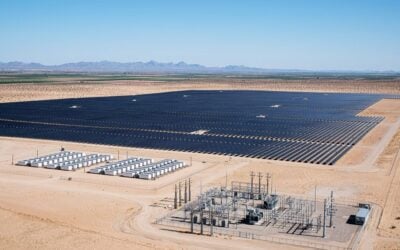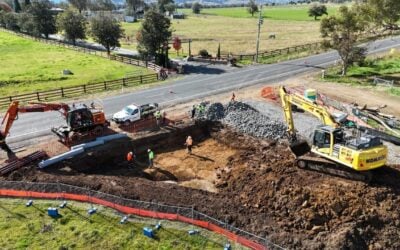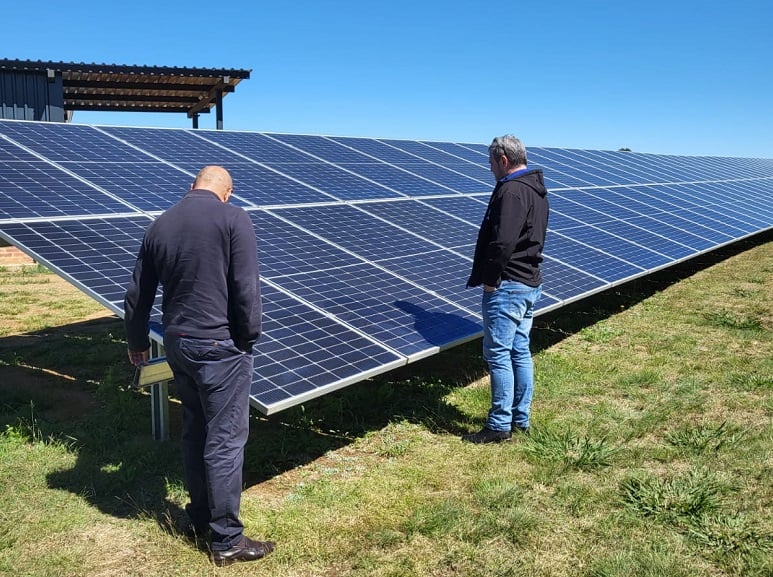
It is “unacceptable” for a rural electricity supplier to use solar to prevent load-shedding, but batteries or other grid-independent electricity sources could be used, South Africa’s grid operator and public utility Eskom has said.
Attempting to balance the grid and manage through shortfalls in power, Eskom enacts frequent load-shedding that leaves regions without electricity for hours at a time.
Enjoy 12 months of exclusive analysis
- Regular insight and analysis of the industry’s biggest developments
- In-depth interviews with the industry’s leading figures
- Annual digital subscription to the PV Tech Power journal
- Discounts on Solar Media’s portfolio of events, in-person and virtual
Load-shedding is a major issue for South Africa’s electricity network, with one recent project announced by the local government in Cape Town aiming to mitigate those impacts through the use of solar PV paired with battery storage, as reported by Energy-Storage.news.
Electricity supplier Rural Free State enacted some measures that it too believed would allow the town of Frankfort which it served to mitigate the impacts of load-shedding, but which were later found to break the National Code of Practice for Emergency Demand Reduction and System Restoration Practices.
The local utility had agreed with Eskom that it could implement a “self-load-shedding” scheme. In order to maintain operation and reliability of critical local infrastructure, such as water pumps, Rural Free State would be allowed to coordinate its schedules to shed loads at pre-agreed times with Eskom.
Rural Free State had then decided to implement ‘voiding’ of load-shedding events during daytime hours, lessening the impacts of grid power being turned off when a local solar PV plant was generating.
This created a dispute between Eskom and Rural Free State’s parent company, Rural Maintenance, which is the electricity distributor for the Mafube Local Municipality of Free State, with the grid operator arguing that the National Code, enforced by national regulator NERSA, was being contravened.
The dispute was formally ended last week in Johannesburg High Court, where it was ruled in favour of Eskom.
This gave Rural Free State “no alternative but to switch off portions of the sunfarm during the day as from Friday 21 April 2023,” the supplier said in a statement in which it thanked local residents and concerned citizens for their support in the court battle with Eskom.
The supplier had applied for interim relief to continue the voiding while NERSA looked into the matter, but had been unsuccessful, and said that had the Municipality of Mafube become involved, rather than stepping aside, the situation could have been prevented.
Adhering to Eskom’s instructions, power cuts will be applied to community members that may otherwise have been able to use the PV plant’s generated energy and said it was “very disappointed” with the outcome of a case that it said would have no negative effect on Eskom even had the grid operator lost.
“To reiterate, this means Rural Free State will no longer be allowed to lessen the negative effects of load shedding when the sun is shining and, in turn, will have to dump unused solar energy whilst parts of Frankfort experience load-shedding,” the statement read.
Earlier this month, South Africa’s main opposition party Democratic Alliance (DA) described Frankfort as “ground zero for energy independence from Eskom”.
Eskom’s rebuttal and explanation of load-shedding
“Small businesses and citizens from all walks of life in Frankfort have come to rely on the reduction of load shedding when the sun was shining. This in turn has certainly contributed positively to the lives of everyday people,” Rural Free State had said.
While Rural said that it struggled to understand the reasoning behind Eskom’s stance and NERSA’s backing of it, Eskom later published its own explanation, which it prefaced with this anecdotal scenario:
“Let’s say a household has a grid-tied rooftop solar installation. The rooftop solar installation does not have a battery storage system installed. Although the installation contributes to a reduction in the need for utility-supplied electricity to the household, its generation capacity is not sufficient to cover the total electricity demand of the household.
When utility-supplied electricity is interrupted during daytime hours while the solar installation is in optimal operation, the solar system is still able to fulfil some of the household’s energy needs.
Although during load-shedding, the family can still switch on lights and some appliances, they will be limited by the supply from their solar system. If this household had battery storage for their solar system or if they had an additional power source that is sufficient for their demand, such as a generator which they would only switch on during power outages, they would have been better equipped to continue with life as normal during a power interruption such as loadshedding.”
Eskom argued that even during daylight hours when the PV farm is supplying electricity, some of Frankfort’s electricity demand will need to be met with Eskom electricity. With Eskom-supplied power across the country subject to load-shedding, Rural Free State would be able to eliminate its need for load-shedding, if it would use alternative energy sources to replace the Eskom-supplied portion, such as “electricity from battery storage or another generation facility that is only employed during a power outage,” the grid operator and utility said.
Eskom is currently building its first battery energy storage system (BESS) project, an 8MW/32MWh system in the eastern province of KwaZulu-Natal to relieve stress on the grid. It is part of a buildout of a total 1,440MWh of 4-hour duration BESS that Eskom considers a flagship proof-of-concept of how batteries can help South Africa’s grid.
That system will be joined on the grid by a 2GW procurement of renewables, storage and other resources that was tendered for as ‘Risk Mitigation’ to reduce the possibility of increased blackouts, and a tender for just over 500MW recently launched by the government Department of Mineral Resources and Energy.


